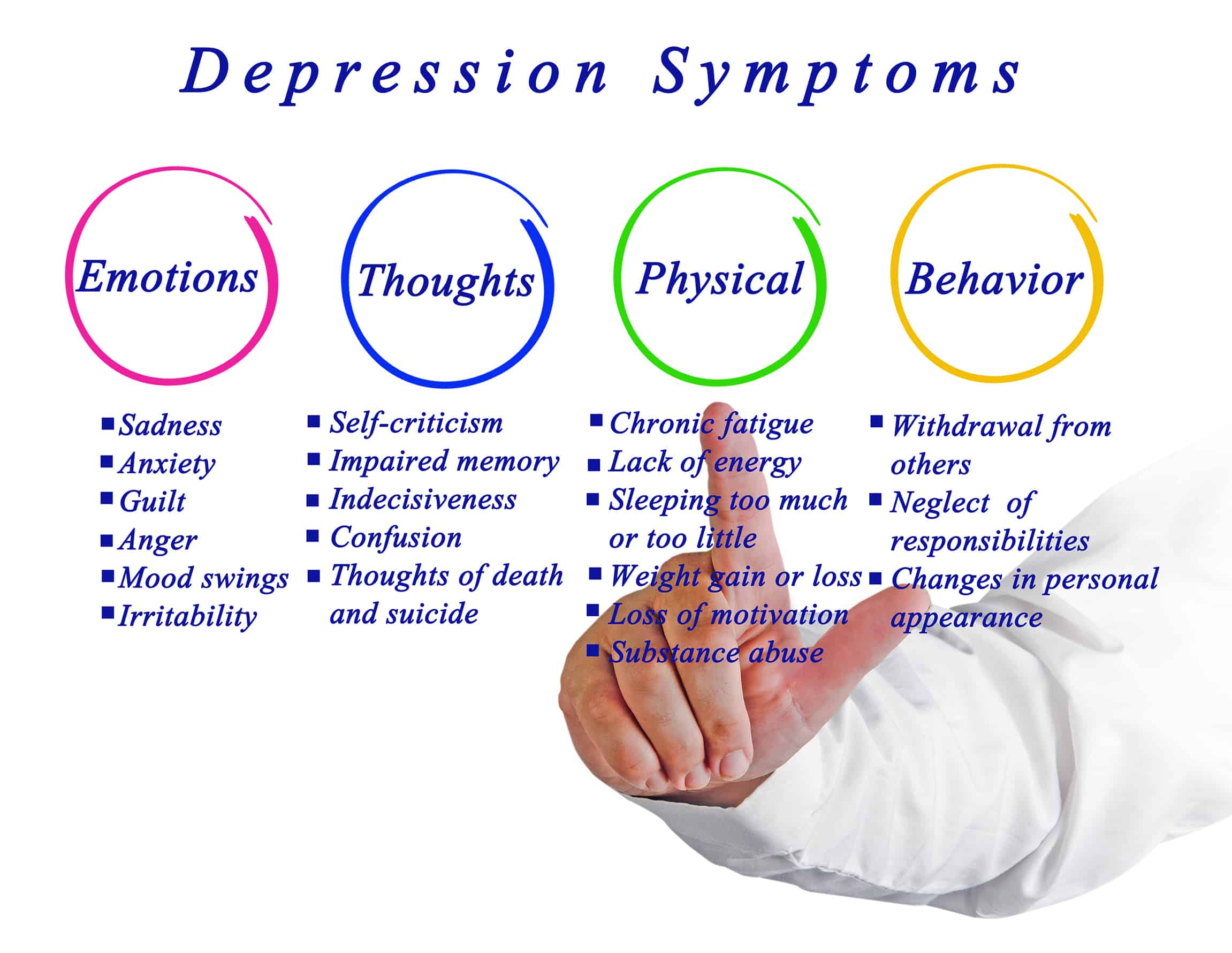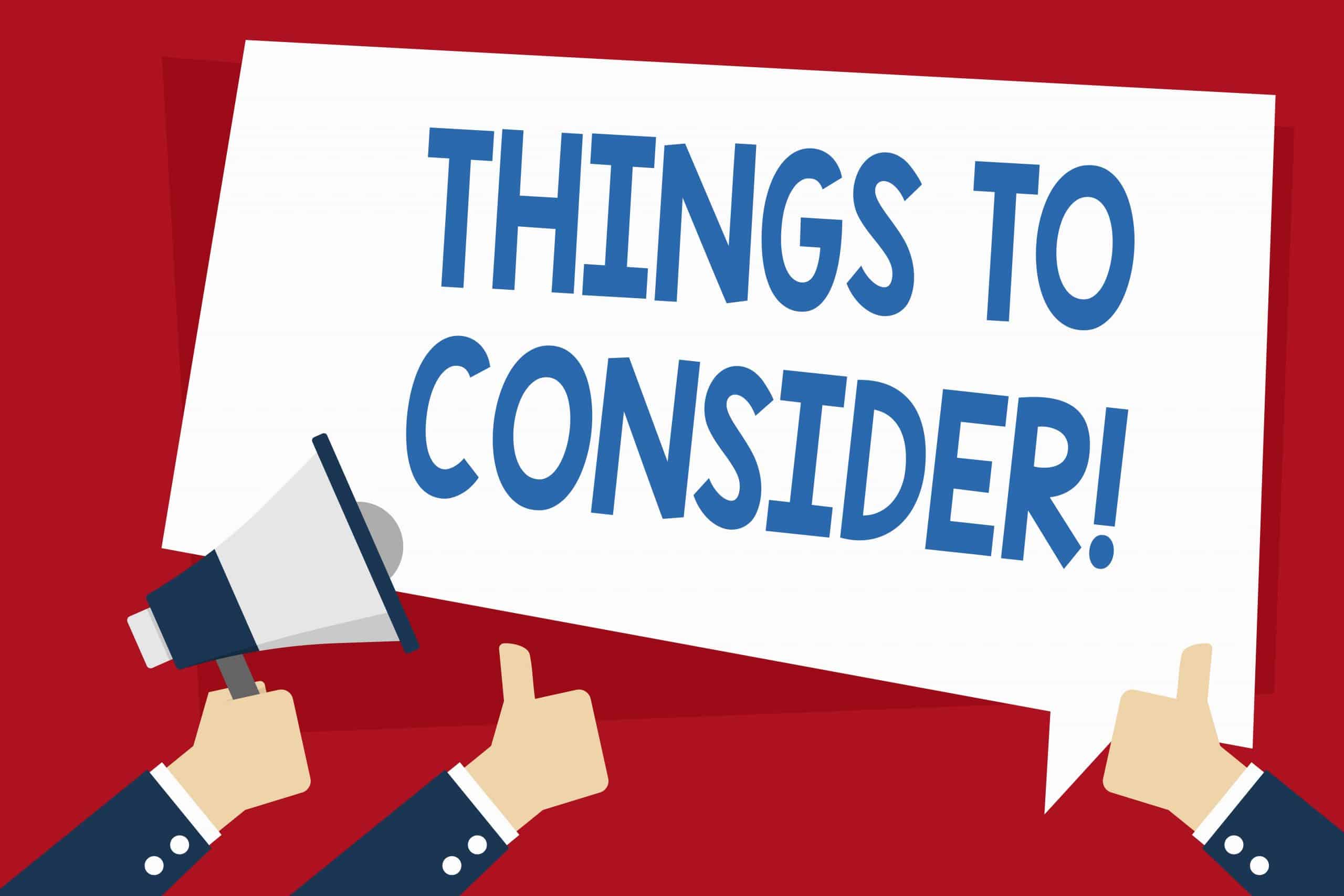VA Rating for Depression Explained – The Definitive Guide
In this post, we will be exploring the VA Rating for Depression in great detail.
VA disability ratings for Depression depend on the severity of a veteran’s mental health symptoms, meaning, the more severe your symptoms, the higher the VA rating for Depression.
The average VA rating for Depression is currently at 70%, but veterans can be rated from 0% to 100% with breaks at 10%, 30%, 50%, 70%.
Okay, let’s first examine some research studies about Veterans and Depression, and then we will jump into the general rating scale for mental health conditions.
How many Veterans suffer from Depression?

A lot, especially Veterans who deployed to a combat zone such as Vietnam, Iraq, and Afghanistan.
A 2008 VA study estimated that about 1 in 3 (33.3%) Veterans visiting primary care clinics have some symptoms of depression; 1 in 5 (20%) have serious symptoms that suggest the need for further evaluation for Major Depressive Disorder; and 1 in 8 (12.5%) to 1 in 10 (10%) have major depression, requiring treatment with psychotherapy and antidepressants.
However, I think these numbers are way low, mainly because Veterans don’t trust mental health professionals to include wanting to avoid the stigma of weakness, and therefore aren’t honest about their mental health issues.
Being honest about mental health as a Veteran is like those alcohol screening questionnaires we had to complete during military service.
Laughable.
Do you drink alcohol?
We all answered “no” or “less than 3 drinks per week” to avoid the possibility of your chain-of-command getting notified that you’re an alcoholic.
Signs and Symptoms of Depression in Veterans

According to the Mayo Clinic, Depression is a “mood disorder that causes a persistent feeling of sadness and loss of interest.”
Clinical Depression is most often diagnosed as Major Depressive Disorder (MDD), and it affects how you feel, think, and behave and can lead to a range of mental, emotional, physical, and social problems.
Veterans may have trouble accomplishing normal day-to-day activities, you may be too depressed to leave your home or get out of bed, and sometimes you may even feel as if life isn’t worth living (suicidal thoughts).
Pre-screening for Major Depressive Disorder typically begins with having a Veteran complete the Patient Health Questionnaire (PHQ-9).
The Mayo Clinic has outlined common signs and symptoms of Depression in Veterans include some or all the following:
- Feelings of sadness, tearfulness, emptiness, or hopelessness
- Angry outbursts, irritability or frustration, even over small matters
- Loss of interest or pleasure in most or all normal activities, such as sex, hobbies or sports
- Sleep disturbances, including insomnia or sleeping too much
- Tiredness and lack of energy, so even small tasks take extra effort
- Reduced appetite and weight loss or increased cravings for food and weight gain
- Anxiety, agitation or restlessness
- Slowed thinking, speaking or body movements
- Feelings of worthlessness or guilt, fixating on past failures or self-blame
- Trouble thinking, concentrating, making decisions and remembering things
- Frequent or recurrent thoughts of death, suicidal thoughts, suicide attempts or suicide
- Unexplained physical problems, such as back pain or headaches
For many Veterans suffering from Clinical Depression, symptoms usually are severe enough to cause noticeable problems in day-to-day activities, such as work, school, life, social activities, or relationships with others.
The problem is we typically suffer alone in silence because we think we’re the only ones.
Guess what fellow Veterans?
You are not alone and YOUR LIFE MATTERS!
VA Disability Ratings for Depression in 2020
| General VA Rating Formula for Major Depressive Disorder | Depression VA Ratings |
| Total occupational and social impairment, due to such symptoms as: gross impairment in thought processes or communication; persistent delusions or hallucinations; grossly inappropriate behavior; persistent danger of hurting self or others; intermittent inability to perform activities of daily living (including maintenance of minimal personal hygiene); disorientation to time or place; memory loss for names of close relatives, own occupation, or own name. | 100% |
| Occupational and social impairment, with deficiencies in most areas, such as work, school, family relations, judgment, thinking, or mood, due to such symptoms as: suicidal ideation; obsessional rituals which interfere with routine activities; speech intermittently illogical, obscure, or irrelevant; near-continuous panic or depression affecting the ability to function independently, appropriately and effectively; impaired impulse control (such as unprovoked irritability with periods of violence); spatial disorientation; neglect of personal appearance and hygiene; difficulty in adapting to stressful circumstances (including work or a worklike setting); inability to establish and maintain effective relationships. | 70% |
| Occupational and social impairment with reduced reliability and productivity due to such symptoms as: flattened affect; circumstantial, circumlocutory, or stereotyped speech; panic attacks more than once a week; difficulty in understanding complex commands; impairment of short- and long-term memory (e.g., retention of only highly learned material, forgetting to complete tasks); impaired judgment; impaired abstract thinking; disturbances of motivation and mood; difficulty in establishing and maintaining effective work and social relationships. | 50% |
| Occupational and social impairment with occasional decrease in work efficiency and intermittent periods of inability to perform occupational tasks (although generally functioning satisfactorily, with routine behavior, self-care, and conversation normal), due to such symptoms as: depressed mood, anxiety, suspiciousness, panic attacks (weekly or less often), chronic sleep impairment, mild memory loss (such as forgetting names, directions, recent events). | 30% |
| Occupational and social impairment due to mild or transient symptoms which decrease work efficiency and ability to perform occupational tasks only during periods of significant stress, or symptoms controlled by continuous medication. | 10% |
| A mental condition has been formally diagnosed, but symptoms are not severe enough either to interfere with occupational and social functioning or to require continuous medication. | 0% |
0 VA Rating for Depression
A mental condition has been formally diagnosed, but symptoms are not severe enough either to interfere with occupational and social functioning or to require continuous medication.
This means you have a diagnosis of Depression, but no subjective symptoms.
You have no occupational and social impairment at the 0% rating.
Interested in learning more about PTSD?
>> Click HERE to see the entire PTSD Rating Scale in detail
10 VA Rating for Depression
Occupational and social impairment due to mild or transient symptoms which decrease work efficiency and ability to perform occupational tasks only during periods of significant stress, or symptoms controlled by continuous medication.
Translation: You have very mild symptoms of Depression.
Maybe you take antidepressants, but these medications keep your symptoms in check.
You may have bouts of Depression every so often, but not routinely.
30 VA Rating for Depression
Occupational and social impairment with occasional decrease in work efficiency and intermittent periods of inability to perform occupational tasks (although generally functioning satisfactorily, with routine behavior, self-care, and conversation normal), due to such symptoms as: depressed mood, anxiety, suspiciousness, panic attacks (weekly or less often), chronic sleep impairment, mild memory loss (such as forgetting names, directions, recent events).
The 30% rating for Depression still has fairly mild symptoms.
Perhaps you have some depression, anxiety, memory loss, and panic attacks, but not very often.
You might be having some trouble sleeping along with mild memory loss.
Typically, you’re having panic attacks LESS than once per week.
50 VA Rating for Depression
Occupational and social impairment with reduced reliability and productivity due to such symptoms as: flattened affect; circumstantial, circumlocutory, or stereotyped speech; panic attacks more than once a week; difficulty in understanding complex commands; impairment of short- and long-term memory (e.g., retention of only highly learned material, forgetting to complete tasks); impaired judgment; impaired abstract thinking; disturbances of motivation and mood; difficulty in establishing and maintaining effective work and social relationships.
The 50% rating for Depression has moderately severe symptoms.
The biggest difference between the 30% and 50% rating is that at this level, you’re having a lot of trouble in your relationships.
Perhaps you don’t have any friends or just want to be alone.
Maybe you’ve completely lost interest in activities or hobbies you once enjoyed.
You may even be divorced or can’t get along with your spouse anymore (angry outbursts and such).
The other difference is you’re now having panic attacks MORE than one time per week.
70 VA Rating for Depression
Occupational and social impairment, with deficiencies in most areas, such as work, school, family relations, judgment, thinking, or mood, due to such symptoms as: suicidal ideation; obsessional rituals which interfere with routine activities; speech intermittently illogical, obscure, or irrelevant; near-continuous panic or depression affecting the ability to function independently, appropriately and effectively; impaired impulse control (such as unprovoked irritability with periods of violence); spatial disorientation; neglect of personal appearance and hygiene; difficulty in adapting to stressful circumstances (including work or a work like setting); inability to establish and maintain effective relationships.
The 70% rating for Depression has very severe symptoms and is a big jump from the 50% level.
Notice the keyword change to “deficiencies in most areas.”
Maybe you constantly check windows and doors in your home or have other obsessive rituals as you go about your day, such as a video camera monitoring system around your property.
Your panic attacks, depression, and anxiety are now happening constantly.
You think about suicide often, meaning you’re having thoughts or even making plans.
You are unable to establish and maintain effective relationships at work and socially.
Maybe you don’t even want to leave your own home.
100 Percent VA Rating for Depression
Total occupational and social impairment, due to such symptoms as: gross impairment in thought processes or communication; persistent delusions or hallucinations; grossly inappropriate behavior; persistent danger of hurting self or others; intermittent inability to perform activities of daily living (including maintenance of minimal personal hygiene); disorientation to time or place; memory loss for names of close relatives, own occupation, or own name.
The 100% VA rating for Depression has the most severe symptoms under the law.
Notice the change to “total occupational and social impairment.”
This means you’re having major issues at work and at home.
Perhaps you can’t work because your Depression is so severe.
This is the first time we see delusional thoughts, hallucinations, and grossly inappropriate behavior.
Severe memory loss and occasional inability to care for oneself are now present at the 100% level.
You might even require the Aid and Attendance of another person to help take care of you.
Two Important Factors Affecting VA Ratings for Depression

A big misconception among veterans is that you need to meet ALL the subjective symptoms tied with a certain rating criterion for Depression in order to get that rating.
This is NOT true!
The Rating Veteran Service Representative (RVSR) will consider all the evidence of record, and normally will assign the VA rating for Depression that includes the “preponderance of the symptoms.”
For example, if a veteran has 3 of the symptoms from the 50 rating for Depression and 5 of the symptoms from the 70 percent rating for Depression, the rating agency shall assign the higher rating, unless evidence of record contradicts this subjective assessment.
The opposite is also true.
For example, if a veteran has 5 of the symptoms from the 30 rating for Depression and 3 of the symptoms from the 50 VA rating for Depression, the rating agency shall assign the lower rating, unless evidence of record contradicts this subjective assessment.
According to CFR 38, Part 4, Schedule for Rating Disabilities, Paragraph §4.126, evaluation of disability from mental disorders, the RVSR (VA Rating Official) is required to consider these two rules:
#1. When evaluating mental health symptoms in veterans, the rating agency shall consider the frequency, severity, and duration of psychiatric symptoms, the length of remissions, and the veteran’s capacity for adjustment during periods of remission.
The rating agency shall assign an evaluation based on all the evidence of record that bears on occupational and social impairment rather than solely on the examiner’s assessment of the level of disability now of the examination.
#2. When evaluating the level of disability for Depression, the rating agency will consider the extent of social impairment but shall not assign an evaluation solely based on social impairment.
VA Rating for Depression – Frequently Asked Questions
Is Depression a VA disability?
Yes, Depression is a VA disability.
Depression can be rated at 0 percent, 10 percent, 30 percent, 50 percent, 70 percent, or 100 percent, depending upon the Frequency, Severity, and Duration of your mental health symptoms.
The VA recognizes Major Depressive Disorder (MDD) as one of 31 mental health conditions that may be related to military service, and thus, Depression is a VA disability, and is eligible for VA disability compensation under federal law.
What are the VA disability ratings for Depression?
The VA will give you a disability rating based upon the severity of your Depression, specifically related to your level of occupational and social impairment.
If you are considered service-connected for Depression, you will receive one of six possible VA disability ratings, broken out as follows: 0%, 10%, 30%, 50%, 70%, or 100%.
Can I have more than one mental health rating, such as PTSD and Depression?
You can, but it’s unlikely.
The reason is because Depression is normally an underlying symptom of another mental health condition, such as PTSD.
The only time a Veteran will be rated for more than one mental health condition is if the mental health symptoms and level of occupational and social impairment can be clearly differentiated among the different diagnosis.
For example, if you already have a VA rating for PTSD at 70%, and you also have a diagnosis of Major Depressive Disorder, the “depression” and “anxiety” will be rolled up as symptoms of the PTSD, thus, you will NOT get rated separately for Depression due to the VA’s prohibition against Pyramiding.
Can I receive Special Monthly Compensation for Depression?
Yes!
VA Special Monthly Compensation under Category S is given if the veteran has at least one condition rated 100% AND one or both of the following:
#1. You are completely and permanently housebound because of his service-connected conditions, meaning that the veteran cannot leave his area of abode (this can include his own home, a hospital ward, or a care facility) at all, and this is expected to be the case for the rest of his life OR
#2. You have another condition rated 60% or group of conditions together rated 60% that are unrelated to the 100% condition. For example, you have GERD rated at 60% and Major Depressive Disorder rated at 100%.
Veterans can get an extra $364.77 or more each month, tax-free, if you meet the mental health housebound criteria.
Can Depression be Permanent and Total?
Some veterans may receive a permanent and total rating, also known as 100% Permanent and Total or 100 Percent P&T.
If your Depression is not expected to improve, you may obtain the status of permanent and total disability.
Did you know VA Claims Insider has independent medical providers in our referral network who may be able to write a “Permanent and Total” letter for you to help you get a 100% P&T VA rating?
Can the VA reduce my disability rating for Depression?
Yes.
Unfortunately, sometimes the VA will lower a veteran’s Depression rating.
If that happens to you, obtain new and relevant medical evidence for Depression and challenge the VA’s decision to lower your rating.
How do I get a 100% VA disability rating for Depression?
Your Depression symptoms must be severe enough to warrant the 100% rating.
However, you do NOT need to meet every subjective symptoms listed under the general schedule to get rated at 100 percent for Depression.
Can I work with a 100% VA rating for mental health?
Yes, you can!
It is a complete myth that having a mental health rating somehow means you can’t work.
Even if you’re rated at 100% for Depression, there is no requirement or mandate that affects your work.
Will Depression affect my security clearance?
It is a myth that having Depression will somehow affect your security clearance.
Of course, you’ll need to report it to your security manager and update your SF 86; however, it has no impact on your security clearance (in our experience serving 10,000+ veterans with a mental health condition since 2016).
Underrated for Depression or Other Mental Health Condition?
It’s very simple to file for an increase if you already have a VA rating for Depression or other mental health condition, such as PTSD.
Simply login to VA.gov, open a Notice of Intent to File, and follow the prompts.
Here’s a video I did that shows you HOW to file a VA claim online, step-by-step.
How to File a VA Claim Online
About the Author
Brian Reese is a VA expert, author, and founder of VA Claims Insider – “The Most Trusted Name in Education-Based Resources for Veterans.”
More than 300,000 military members and veterans come to the VA Claims Insider and Military Disability Made Easy websites each month to get educated on the VA and DoD disability process.
Learn more >> About VA Claims Insider HERE. <<
Brian’s frustration with the 8-step VA disability claims process led him to create “VA Claims Insider,” which provides disabled veterans with tips, strategies, and lessons learned to win their VA disability compensation claim in less time.

He is also the CEO of Military Disability Made Easy, which is the world’s largest free searchable database for all things related to DoD disability and VA disability, and has served more than 6,000,000 military members and veterans since its founding in 2013.
Veterans can download one of his #1 most downloaded FREE eBooks right here right now: “The Secret Guide to 833 Ratable VA Disabilities” by clicking HERE now.
Brian is a former active duty Air Force officer with extensive experience leading hundreds of individuals and multi-functional teams in challenging international environments, including a combat tour to southern Afghanistan in 2011 in support of Operation ENDURING FREEDOM.
Brian is a Distinguished Graduate of Management from the United States Air Force Academy, Colorado Springs, CO and he holds an MBA from Oklahoma State University’s Spears School of Business, Stillwater, OK, where he was a National Honor Scholar (Top 1% of Graduate School class).
